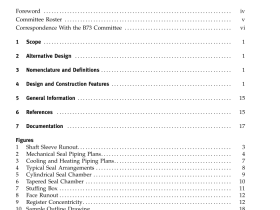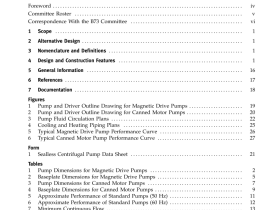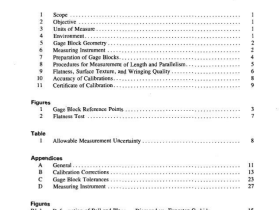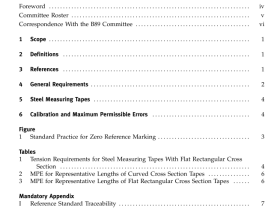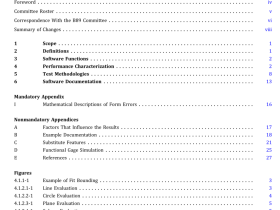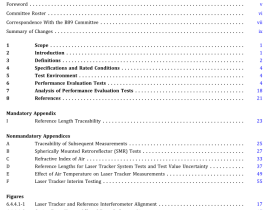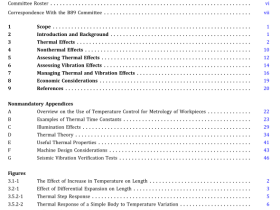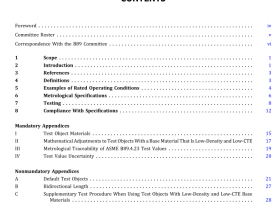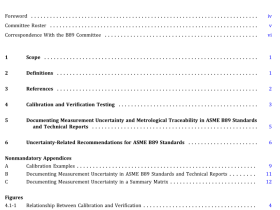ASME Y14-6 pdf download
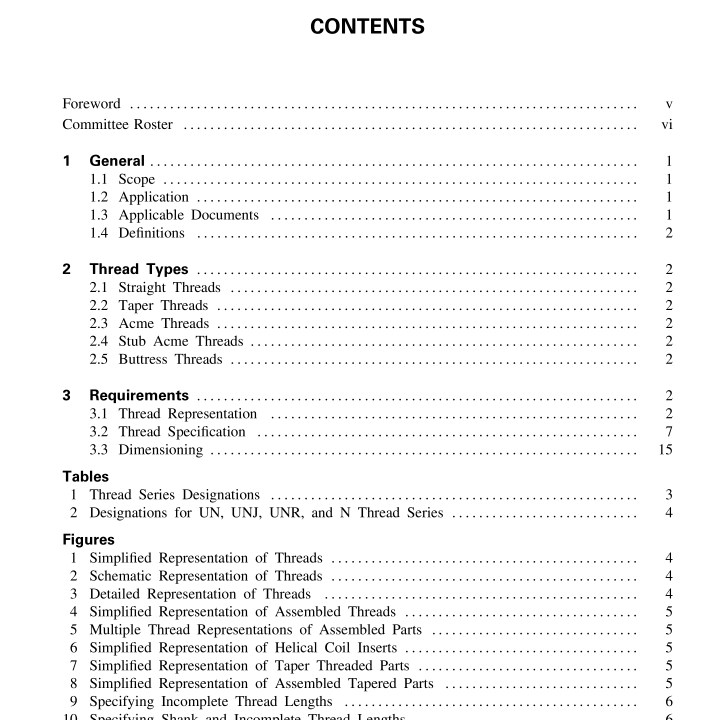
ASME Y14-6 pdf download SCREW THREAD REPRESENTATION
1.4 Definitions Definitions of terms are in accordance with ASME B1.7M and the applicable standard.
2 THREAD TYPES
2.1 Straight Threads Straight 60 deg screw thread designations for draw- ings are based on ASME B1.1, ASME B1.15, ASME B1.13M, ASME B1.21M, and ASME B1.10M. Straight pipe thread standards are covered in the documents cited in para.
2.2. 2.2 Taper Threads Taper pipe thread designations for drawings are based on ASME B1.20.1 (General Purpose) and ASME B1.20.3 (Dryseal). NOTE: Pipe threads are designated in established trade sizes, which signify a nominal diameter only.
2.2.1 Taper Pipe Thread Features. General pur- pose pipe thread forms allow crest and root interference or clearance when the flanks contact. When a clearance occurs, unless filled with a lute or sealer, a spiral passage will exist through which leakage can occur. The dryseal pipe thread form does not allow such clearance, but rather has crest and root metal-to-metal contact or interference when the flanks contact. It is this feature that eliminates the need for a lute or sealer to provide for leak-proof assemblies.
2.2.2 General Purpose Taper Pipe Thread Se- ries. General purpose taper pipe thread requirements are specified in ASME B1.20.1. Included are taper threads designated as NPT and NPTR. See Table 1 for designations and definitions.
NOTES:
(a) Straight pipe threads NPSC, NPSL, and NPSM are also included in ASME B1.20.1.
(b) Aeronautical taper pipe threads specified in MIL-P-7105 were designated ANPT. MIL-P-7105 is no longer active, but SAE AS 71051 replaces it.
2.2.3 Dryseal Pipe Thread Series. Dryseal pipe threads are specified in ASME B1.20.3. Included are taper dryseal pipe threads designated NPTF-1, NPTF- 2, and PTF-SAE Short Series. See Table 1 for designa- tions and definitions. NOTE: Internal straight dryseal pipe threads NPSF and NPSI are also included in ASME B1.20.3.
2.3 Acme Threads Acme screw thread drawing practices are based on ASME B1.5. Included are general purpose threads, where there is clearance on flanks and at major/minor diameters, and centralizing threads, where clearance at the major diameter is limited. See Table 1.
2.4 Stub Acme Threads Stub Acme screw thread drawing practices are based on ASME B1.8. See Table 1. 2.5 Buttress Threads Buttress screw thread drawing practices are based on ASME B1.9. The Buttress thread is designated “BUTT” for external thread pulls or “PUSH-BUTT” for external thread pushes. See Table 1.
3 REQUIREMENTS Representation, specification, and dimensioning of threads shall be in accordance with the following para- graphs.
3.1 Thread Representation Three methods in general use for representing screw threads on drawings are as follows: simplified in Fig. 1, schematic in Fig. 2, and detailed in Fig. 3. One method is generally used within any one drawing. When required, all three methods may be used. See Figs. 4 and 5.
3.1.1 Simplified Representation. The simplified drawing method is recommended for straight and tapered 60 deg form, Acme, Stub Acme, Buttress, helical coil insert, and other thread forms except where detailed representations are required. See para.
3.1.3 and Figs. 1, 6, 7, and 8.
3.1.1.1 Representation of the vanish (runout) thread should be indicated with the fully formed thread whether or not it is to be controlled. See Fig. 1. When essential to design requirements, the vanish thread
